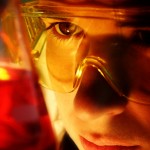Science Projects that work best in Winter
The Telegraph reported that, “Britain is bracing itself for one of the coldest winters for a century with temperatures hitting minus 16 degrees Celsius”. So how does the cold winter work out for science projects? Well since temperature can be quite crucial to some science experiments there are a number of science projects which work out better in winter than in summer.
For instance if you are looking to freeze liquids for a project, it may help to have a naturally cold atmosphere around. One great science project is to make a mock cave with stalactites and stalagmites. You can use water or any other chemical to make this entertaining science project. While other fluids may be more stable at a higher temperature, water works well in winter.
Of course this project will not be possible using water if the science fair project is being held in summer. For one very simple reason, the water will melt and there would be nothing left to show. Other experiments in the winter can use the natural resource of snow. How about designing the ideal sleigh as your science project? You could use different materials and designs. Then check the sleighs for efficiency.
Not only would you have a whole lot of fun doing this experiment, it would also make a good comparison study in your project report. You could exhibit the best model along with the others in you display. Are you looking for more ideas? Here’s more help for your science project. Remember that winter is a great time to do some experimenting on your own. Just be safe.


